I used to think a chicken was just a chicken until I decided I needed to have a few for my very own. After calling around to several hatcheries and asking questions that only a novice chicken owner could dream up, I discovered there were many types and breeds of chicken to choose from.
The mission then became to discover what breed of chicken was best for our family’s backyard and what types of food, water, and shelter did we need to accommodate them.
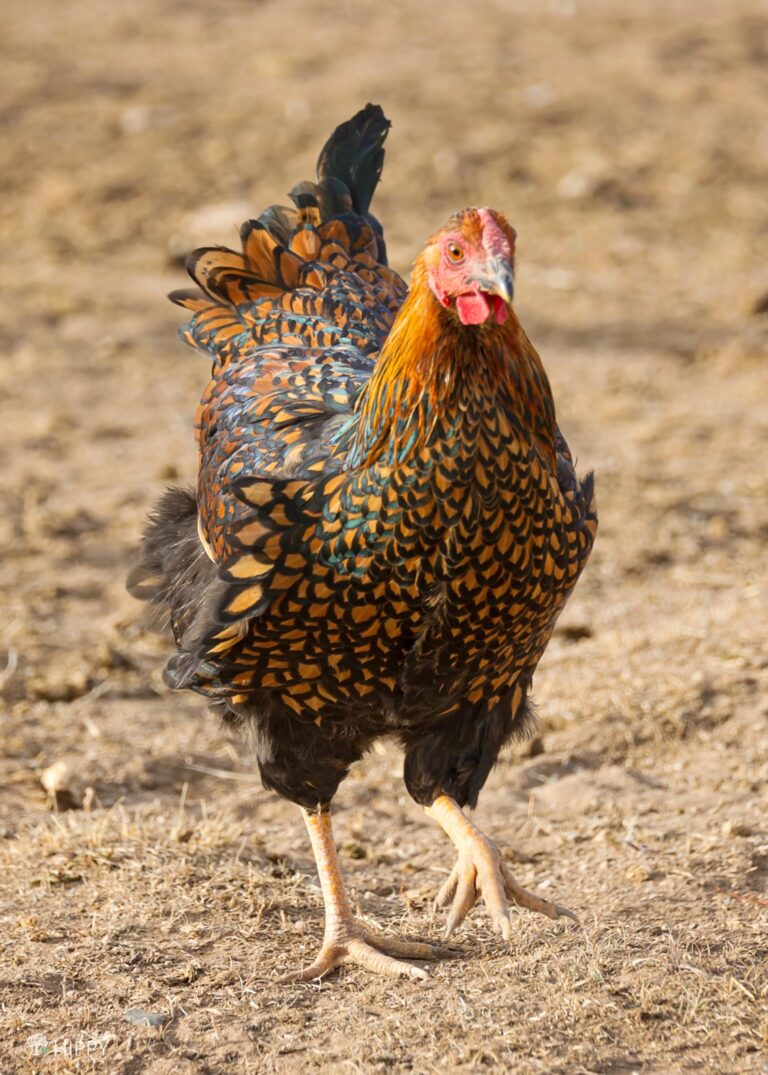
The hatchery was happy to tell us what to look for in a backyard chicken, and we discussed characteristics such as temperament, hardiness, egg laying, purpose, and aesthetics.
After some debate, we decided the best breed of chicken to start our family flock was Silver Laced Wyandotte, a color variation of an amazing breed of chicken.
Wyandottes are one of the most versatile, adaptable, beautiful, and friendly breeds of chicken out there. They are a great choice for backyards and farms, urban and suburban homesteads. They are gentle with children and fun to watch.
While they were once considered an endangered breed, the Wyandottes population has soared due their recent popularity with chicken lovers. They are no longer on the Livestock Conservancy’s endangered list and are said to have graduated from it in 2016.
In this article, you’ll discover more about why Wyandottes are a popular breed of chicken, what variations occur within the breed, what special needs they have, and why you would want to raise this breed over another.
Table of Contents
What is a Wyandotte chicken?
A Wyandotte is an American, heritage, dual purpose chicken. The Livestock Conservancy defines heritage breeds as chickens that were raised by our “forefathers” – or breeds that were established before commercial agricultural practices became commonly used.
According to thehappychickencoop.com, this is the first American breed of chicken to be bred with the intention of being dual purpose, in other words, to be bred for both meat and egg production.
Typically, a dual-purpose chicken is a larger bird which is a little slower to grow out, as opposed to a chicken that is mainly used just for meat or just for egg production.
Wyandotte’s are bred to be both full size and bantam size. A full-size, or heavy, hen usually weighs in around six to seven pounds, while a full-size rooster weighs closer to eight or nine pounds.
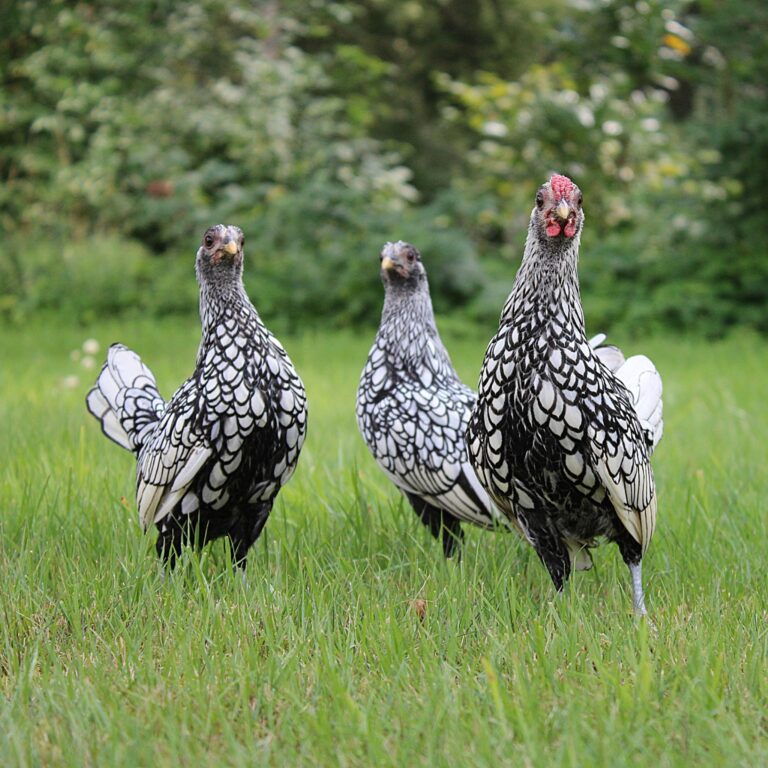
Bantam-sized Wyandottes generally are somewhere between 36 and 40 ounces, while maintaining all of the other breed characteristics.
Where Did Wyandottes Originate?
The first Wyndottes were bred for dual purpose status in the United States in the late 1800s. Their original name was the American Sebright, but this name was changed by the American Poultry Association when the breed was officially accepted into its ranks.
The name was changed to pay homage to the Wyandotte Indian Nation in recognition for the help they offered to the American settlers.
The first colors to be bred were the silver laced Wyandotte and the gold laced Wyandotte. Shortly thereafter, the breed was taken to England where it continued to grow in popularity.
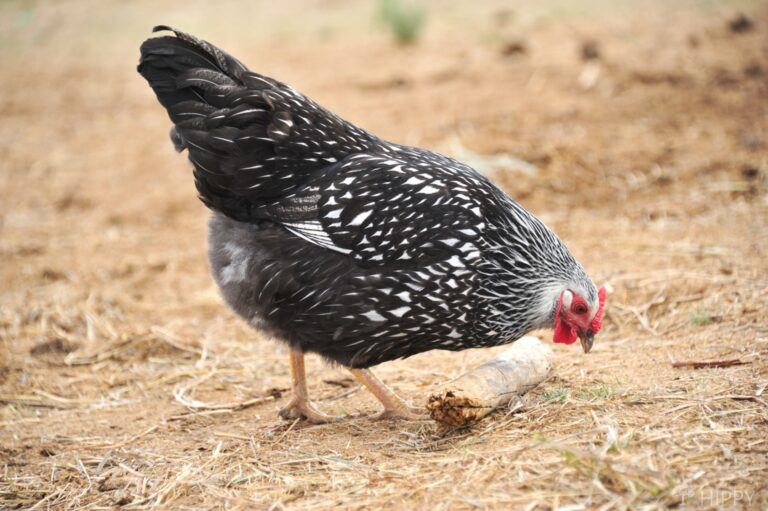
What Varieties of Wyandottes Exist?
Laced Wyandottes get their names from the lacy pattern of their feathers, making them a beautiful addition to the backyard flock. You won’t just find laced Wyandottes, though, these chickens are bred in a full range of interesting colors and patterns.
American Poultry Association official coloring includes: the traditional Silver Laced and Golden Laced varieties, as well as White, Black, Blue, Buff, Silver Penciled, Columbian, and Partridge.
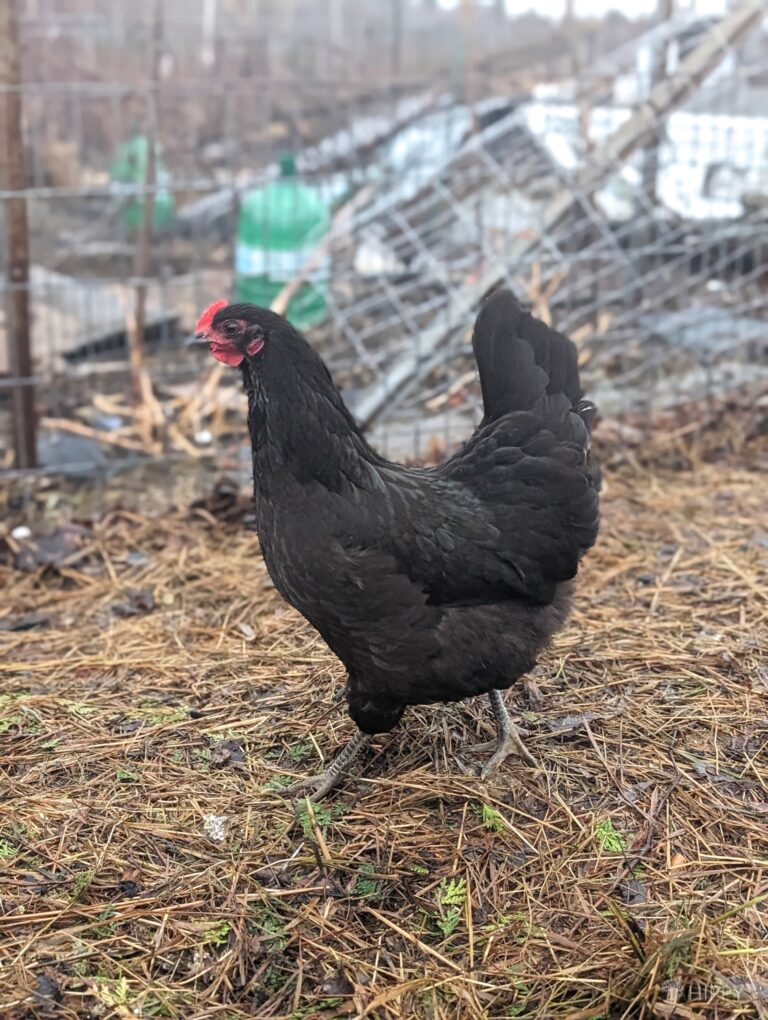
The laced Wyandottes have a black or dark brown feather base, with white or golden feathering patterns that mimic the look of lace.
White Wyandottes do not have the lacy coloring pattern, but appear as a beautiful, pure white bird with bright red rose combs and wattles, while maintaining the large, rounded Wyandotte shape.
Blue Wyandottes appear as a grey color. Columbians have a white feather base, with black feathers appearing on the neck and tail, accompanied by bright red waddles and combs:
The silver penciled Wyandotte displays a tiny and intense black and white pattern.
There are many mixes of these, and some of the newer, unofficial colors include barred and blue raced red, both striking color combinations.
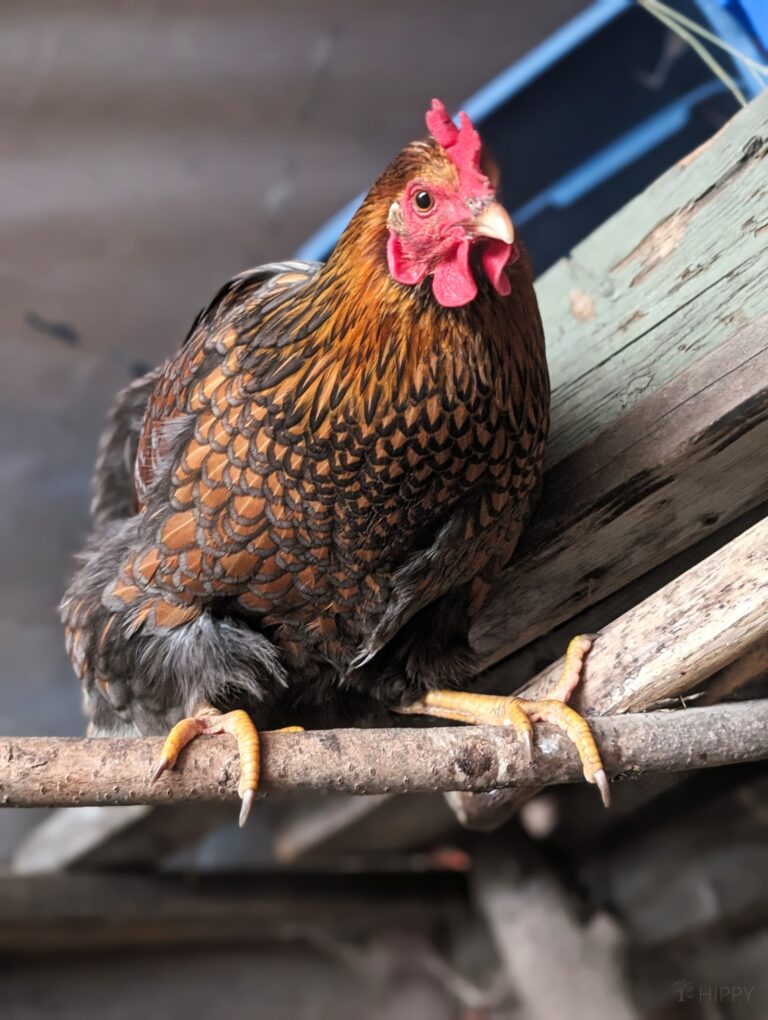
Temperament
The overall temperament of a Wyandotte is docile and curious. Wyandotte hens as a breed are very easy going with people and will tolerate children of all ages picking them up and carrying them around.
A few of ours would enjoy wagon rides with our children and would come to visit any time we were outside to play or have a barbecue. You can encourage your Wyandottes to be tame and friendly by handling them often and gently, while giving them treats.
Curiosity definitely gets the best of them, as they would hop onto my front porch and peck on the door to see if anyone would answer.
They are an intelligent breed and can be trained to do tricks or come when called. However, I have found my Wyandottes have trained me to bring them treats.
When I come out the back door, they all come running to see what tasty morsel I have brought them.
When allowed to free range, visitors are occasionally intimidated by the flock of hens surrounding their car, only to discover these friendly hens were merely looking for any crumbs or leftovers which might spill out of a car door.
Wyandottes are mostly docile with each other, although they do establish a pecking order and maintain it. In our flock, the Wyandottes are the largest birds and also at the top of the pecking order.
However, the flock maintains a very peaceful existence without fighting or picking, just an occasional squabble over a roosting bar for sleeping.
Due to predator issues, we have moved our flock into the pen with the goats. The Wyandottes get along well with the goats, snuggling into their hay feeder, occasionally laying eggs in the goat shed, and catching a free ride on their backs from time to time.
The hens manage to stay out from underfoot but enjoy hanging around the goats as well as each other.
Although these chickens are very docile and people friendly, you do need to supervise them around children, especially small ones. Curious birds may want to discover if tiny toes are edible, and can deliver a swift, though not typically dangerous, peck in an instant.
However, roosters of any breed can be aggressive. Our lone Wynadotte roo was very friendly and social until he hit sexual maturity, then he became aggressive and mean and he could no longer stay on our farm.
If you have a rooster in your flock, you must be on the watch at all times. Even sweet, gentle roosters can become aggressive when a hen is around or when they reach sexual maturity.
Of course, there can be variations in any breed and you may find that you have a cranky hen, as well. My philosophy is to never keep animals that are aggressive, no matter what breed or type they are.
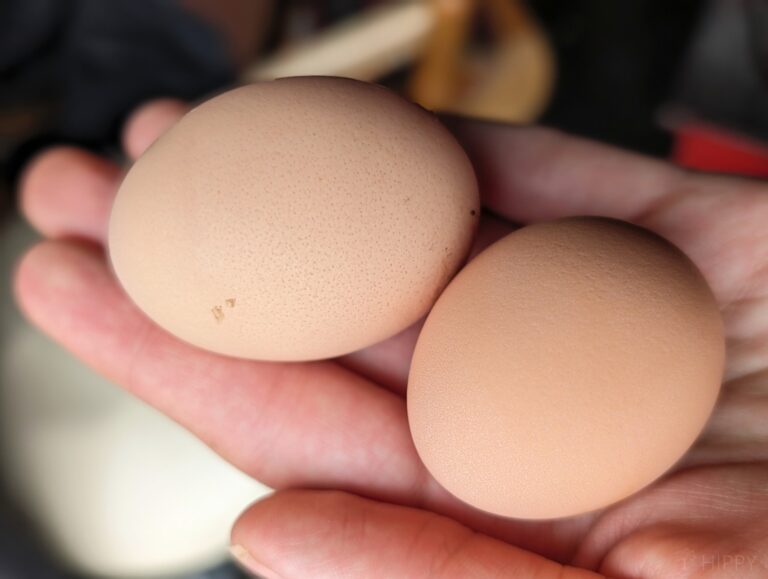
Egg Laying
One of the best reasons to have Wyandottes is for their eggs. Wyandottes are very consistent layers, and will mostly lay year-round, especially if you put just a little bit of supplemental light in their coop during the darkest days.
A well-protected light bulb, left on for just a couple hours, is more than sufficient for these winter layers.
They lay medium sized, light brown eggs…
They may lay as many as 200 eggs per year. As they grow older, their eggs will get larger and they will lay them less frequently, but they will continue to lay for a long time.
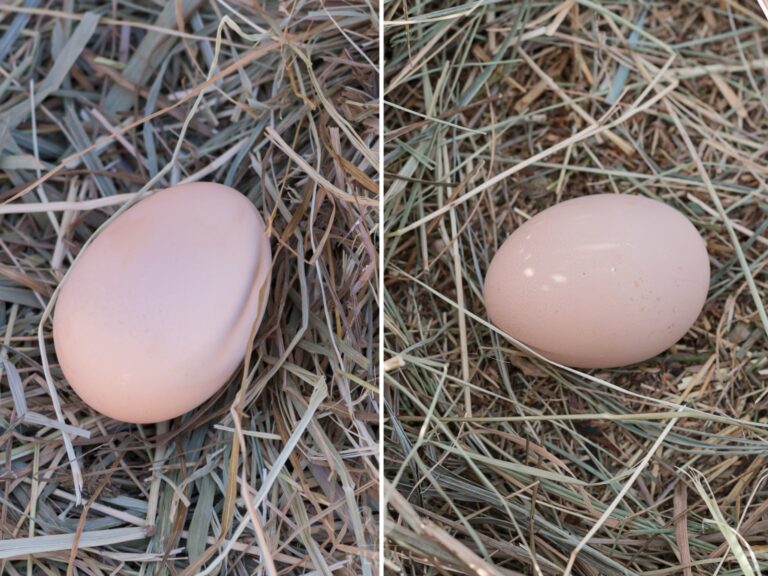
There is some variation in color from very light cream to medium brown eggs. If the egg shells start to become a little thin, you may need to add some supplemental calcium to their diet to give them a boost.
Because they are a heavier bird, this breed does not start laying until around six to eight months of age. If they reach egg laying age in the late fall, they may not lay until spring due to the decrease in light.
If you are feeding commercial feed, once they start laying, you can switch them from a flock raiser crumble to a layer pellet for more balanced nutrition.
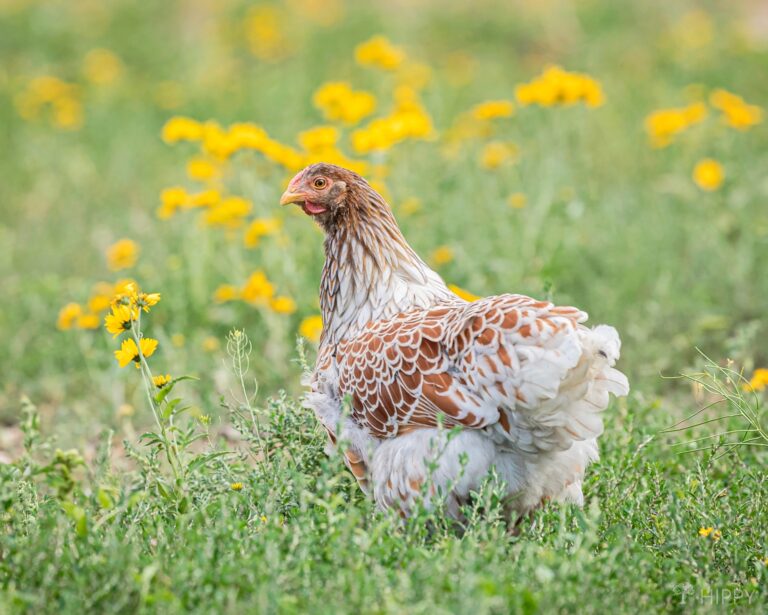
Do Wyandottes Need Special Care?
Wyandottes are probably one of the easier breeds of chicken to care for, due to their adaptable nature and hardiness.
A simple, well-ventilated and draft free coop with roosting bars, nest boxes, and bedding is perfectly fine for these heat and cold tolerant birds. They aren’t too picky about their living accommodations.
Once they are fully feathered, they do not need any sort of supplemental heat and have survived extreme cold (down in the single digits where I live) without anything more than a little extra bedding. Do make sure they have access to shade in the heat of the summer.
They can easily free range for a large portion of their food but seem to thrive equally well on a mix of commercial chicken feed, table scraps, and chicken mash and scratch grains.
If allowed to free range, their foraging instincts will help control pests in your yard such as ticks, caterpillars, and even small rodents, frogs, and snakes.
Like other chickens, Wyandottes need access to fresh clean water at all times, but don’t be surprised if you find them drinking out of muddy puddles, rainwater, or creeks.
Wyandottes are susceptible to predators such as hawks, foxes, raccoons, dogs, and even o’possums, so you may want to consider fencing your chickens in.
However, I have seen several Wyandottes band together to attack and chase off a young hawk that was looking for an easy meal. They do stand up for each other and work together when attacked. On the other hand, if you free range your chickens, you will likely lose a few to predators.
Wyandottes do equally well foraging and free ranging as they do in captivity. They are docile enough to be happy in their own fenced in area, provided they have enough room per bird to scratch and roam.
Whether you are willing to risk sacrificing a few birds is a personal choice that only you can make.
If your chickens will be confined, you will need to give them at least two or three square feet of space inside the coop per chicken, and about ten square feet of space per chicken in the chicken run or pen.
More space is better, especially if you find that they are picking on each other.
However, if you are free ranging your hens, you can cut that down and just have about four square feet of space per chicken in the coop, so that they have a place to get out of the elements if they choose.
In order to prevent sleeping squabbles, make sure your Wyandottes have a least twelve inches of roosting space per chicken, and more if possible.
Are Wyandottes Broody?
Wyandottes can be broody, but mine mostly are not. Generally, they go broody in the heat of summer when the days are long and their body temperature is higher, causing the hormonal shift which makes them want to sit on eggs.
They may continue to add other hens’ eggs to their clutch for the entire duration of the sitting period – approximately 21 days. If the weather is extremely warm, the eggs may hatch on the earlier side.
Wyandotte chicks are pretty hardy and Wyandottes tend to make good mothers, which is a great combination if you want to hatch your own eggs. Remember that you must have a rooster to fertilize the eggs if you want to hatch them.
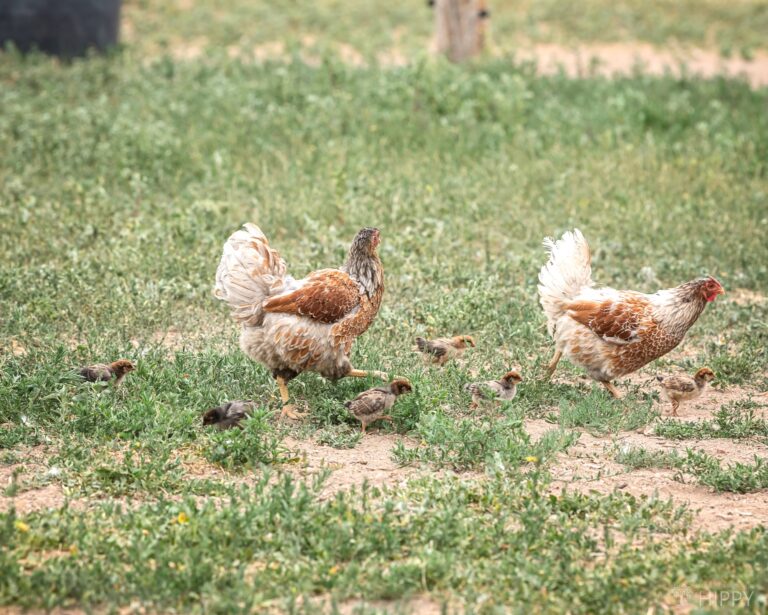
In my case, there were two broody hens. One abandoned its nest near the end of the sitting period, but due to the extreme heat and humidity during those last couple of days, along with the hardiness of Wyandotte chicks, those chicks were able to hatch anyway.
The other broody hen saw those chicks as a threat to her eggs and unfortunately tried to kill the chicks. This is pretty rare among Wyandottes although it can happen in any breed.
We rescued the chicks and put them in a brooder to grow and thrive, which they did. The hens ceased being broody and life in the coop returned to its normal, peaceful existence. As the hens got a little older, their tendency to become broody has reduced.
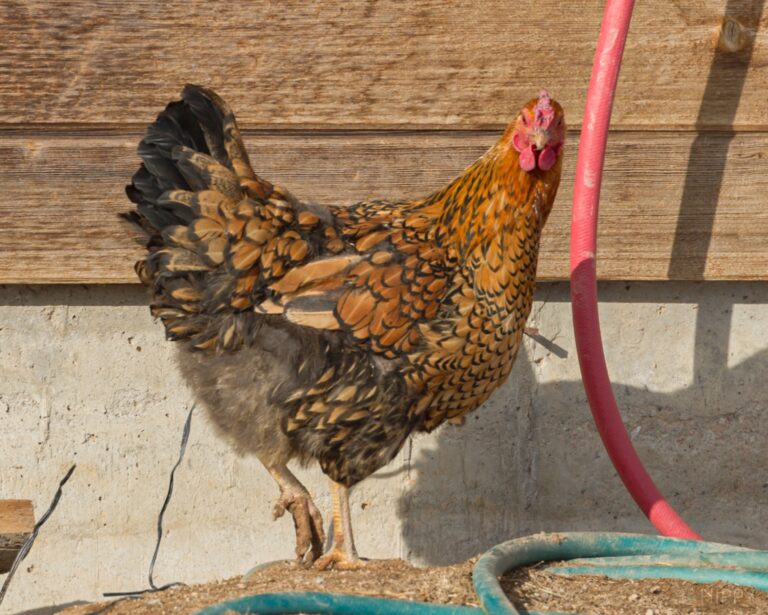
Raising Wyandottes for Meat
While I did not set out to raise Wyandottes for meat purposes, they do make a solid meat bird.
If you are going to use them in a sustainable flock, you’ll have extra roosters to get rid of, so you may want to consider butchering them yourself or having someone butcher them for you.
Where I live, there is a family farm nearby that will butcher and process live birds for a very small price.
Dual purpose birds, such as Wyandottes, will consume more feed than a meat bird, but they are still an excellent choice for backyard flocks and especially homesteading. For the most tender cuts of meat, have the bird butchered between 3 and 8 months of age.
While you can butcher older birds, such as old hens that are no longer laying, the meat will be tougher and you will have to be more creative when cooking it.
A six pound bird will provide you with about four pounds of dressed carcass. According to Rapid City Journal, a chicken is ready to harvest when its breast is full and round.
Where to Find Wyandottes for Sale
Due to their recent popularity, it is much easier to find Wyandottes for sale than it used to be. Large hatcheries across the United States will sell and ship day old chicks to your post office, where you can pick them up. This is how we purchased our very first Wyandottes.
You may be able to find them at chicken swaps, poultry shows, Tractor Supply, and even Craigslist. I recently purchased a few Gold Laced Wyandottes at our local feed store in the spring, where they were on sale because they were getting too big fast.
If it all possible, purchase these heritage birds from a reputable breeder in order to have the best traits and the friendliest birds.
Why You Want Wyandottes for Your Flock
Wyandottes are a great breed of chicken for both newbie owners and experienced chicken keepers. They are docile, getting along well with people, other animals, and each other.
They are hardy, and have withstood extreme Pennsylvania heat, humidity, and cold with just a basic shelter and fresh food and water. They tend to be healthy and easy to care for, and are adaptable to most situations.
These chickens are great for both meat and eggs, laying consistently year round. With an average lifespan of six to twelve years, these intelligent, curious, and friendly chickens will make both a great companion animal and homestead livestock.

Amanda is a homesteader and a Jesus-loving, mother of 6 toddlers. She’s raising lots of fancy chickens and goats on her small homestead (among other things). Find out more about the team here.

I really enjoyed your free teachings about this fantastic birds. it seems they are the once to go for, i mean there color pattern is so amazing. i am a person who prefer this tough, easy adaptive, disease free stock.
Thanks for the article.